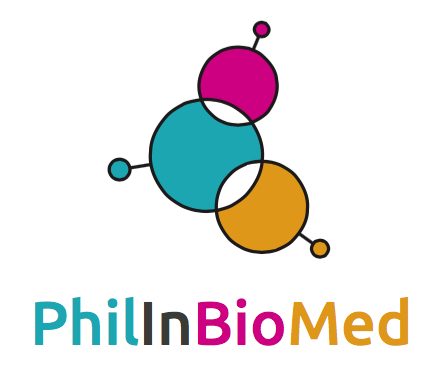
- This event has passed.
Philosophy of Cancer Biology Workshop, with Hans Clevers (PUSG, University of Bordeaux, France)
15 October 2018 - 17 October 2018

The University of Bordeaux, the CNRS, ImmunoConcEpT, and PhilInBioMed host an international workshop on the Philosophy of Cancer Biology in Bordeaux, France, organized by Sara Green, Lucie Laplane, Maël Lemoine, Thomas Pradeu, and Elena Rondeau, and funded by Thomas Pradeu’s ERC-funded project IDEM.
October 15-17, 2018
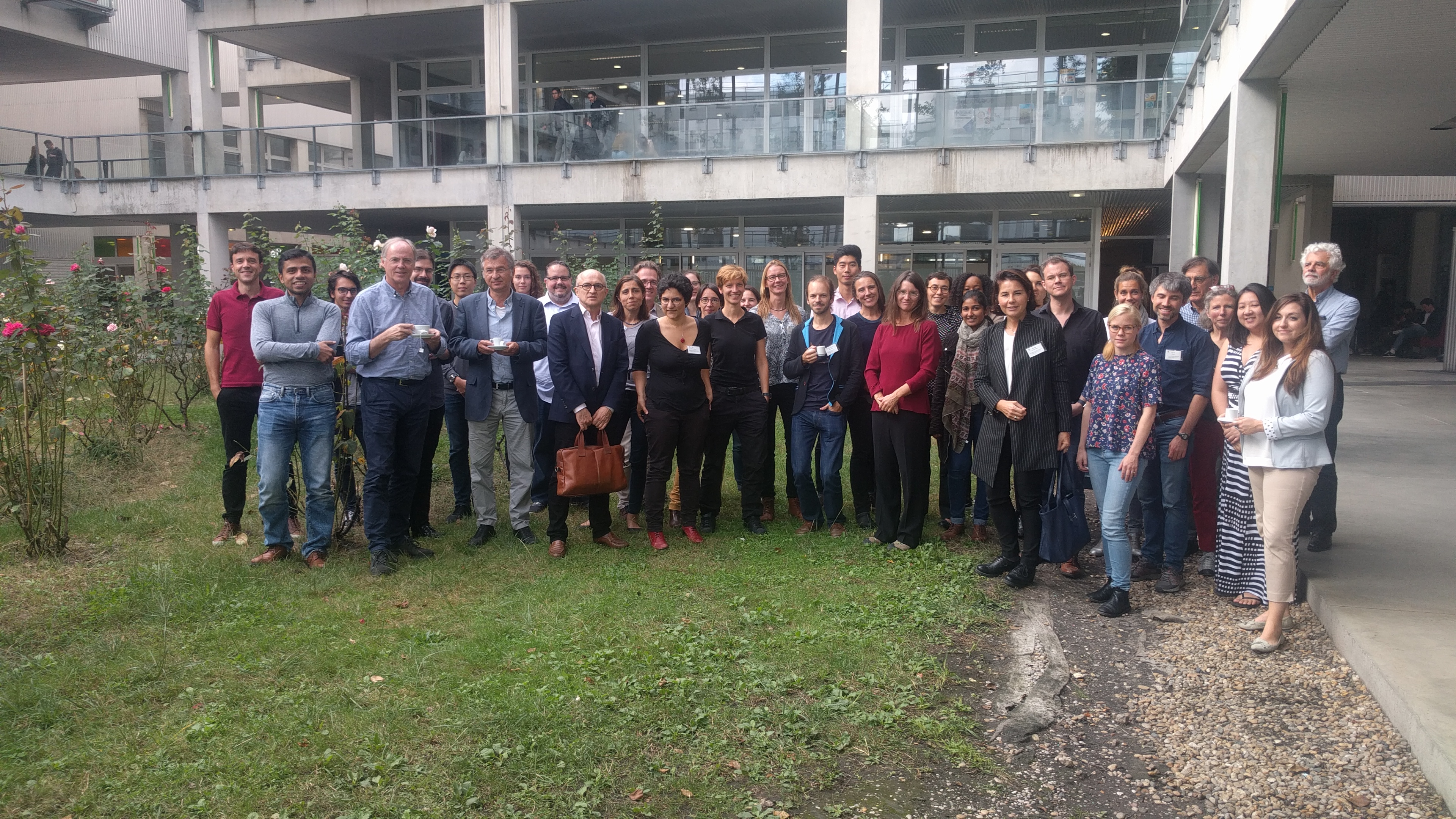
University of Bordeaux (France)
Pôle universitaire des sciences de gestion (PUSG), Room C002
Program: Program Cancer Workshop with map
Opening conference:
(University Medical Center Utrecht, Utrecht, The Netherlands+ University of Utrecht, The Netherlands; + Hubrecht Institute of the Royal Netherlands Academy of Arts, Utrecht, The Netherlands; + Princess Maxima Center for Pediatric Oncology, Utrecht, The Netherlands),
Stem cell-based organoids as avatars in human disease
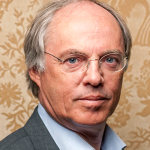
Abstract
Stem cells are the foundation of all mammalian life. Stem cells build and maintain our bodies throughout life.
Every organ in our body is believed to harbor its own dedicated stem cells. These adult stem cells replace tissue that is lost due to wear and tear, trauma and disease. Adult stem cells are highly specialized and can only produce the tissue in which they reside; they are ‘multipotent’. Examples are bone marrow stem cells that make all blood cells, skin stem cells and gut stem cells. Even the brain is now known to harbor its specialized stem cells. The adult stem cells allow us to live 80-90 years, but this comes at a cost: they are the cells that most easily transform into cancer cells.
We have identified a gene (lgr5) that marks a series of known and novel adult stem cells, in organs such as the gut, the liver, the lung and the pancreas. We have learned to grow these stem cells in a dish into mini-versions of the human organs from which they derive. This so called organoid technology opens a range of avenues for the study of development, physiology and disease, and for personalized medicine. In the long run, cultured mini-organs may replace transplant organs from donors and hold promise in gene therapy.
Invited speakers:
Marta Bertolaso (Universitá Campus Bio-Medico di Roma, Italy)
Modeling cancer: how the explananda change in the research programs

Abstract
The definition of cancer, the relevant processes, the organizational levels and environmental factors that should be considered, the explananda and the explanantia, all these aspects are continuously changing over time. Along with disorientation, uncertainty and internal divisions, however, cancer research exhibits clear signs of long-term progressive collective orientation: cancer is no longer seen as a gene based disease but rather as a disease in which the environment plays an important role, and system level and systems biology approaches are spreading. Cancer is still described as a process (continuum dimension) and as a thing (discrete dimension), but its processual dynamic is clearly taking over the explanatory challenge posed by carcinogenesis and cancer onset too. Empirical evidence and trends in the explanatory models point towards the peculiar dynamics that structure the organismic developmental process and organogenesis: it is them that actually get compromised in cancer, so that cancer is more and more clearly seen as the disruption of the on-going process of coupling that structure biological development and growth. In this talk I will describe better how explananda and explanantia are changing in cancer research, and speculate on how this might lead also to update our philosophical concept of ‘scientific advancement’.
Melinda Bonnie Fagan (Department of Philosophy, University of Utah, USA),
Mintz’s teratocarcinoma experiments as stem cell models

Pierre-Luc Germain (University and ETH Zürich, Switzerland; European Institute of Oncology, Italy),
Darwinian populations in (human) cancers
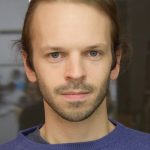
Abstract
Cancer initiation and progression are evolutionary processes playing out in a context intermingled types of entities and populations. Using Godfrey-Smith’s framework of Darwinian populations to structure the analysis, I review some of the discussions concerning the expected role, outcome and dynamics of natural selection in this evolution. I discuss the basis of a strategy to distinguish different qualities of evolution and the influence of populations’ characteristics on them, applying it to cancer.
Sara Green (Section for History and Philosophy of Science, Department of Science Education, University of Copenhagen, Denmark),
Demarcation problems in cancer research

Abstract
I discuss two demarcation problems in cancer research. The first relates to the difficulties of demarcating different types of cancer in the context of personalized medicine, the second to the difficulties of distinguishing between malignant cancer and so-called indolent cancers (or pseudo disease). The problems are characterized by distinct epistemic challenges. Yet, I shall examine these on a par because they reveal particularly pressing and related challenges in the context of cancer genomics and personalized medicine. With cancer genomics, some organ specific cancers have been recategorized or stratified into biomarker specific cancers. This has led to what some have described as geneticization and differentiation of disease. The overwhelming degree of tumor heterogeneity even suggests that each tumor may have its own set of genetic changes that also vary locally and change over time. This raises intriguing questions about what it takes for cancer biomarkers to justify the emergence of disease categories or a demarcation of distinct subtypes of cancer. This type of demarcation problem is philosophically interesting because it reveals how evidence and categories must be negotiated at the interface of basic research and clinical practice. Moreover, it calls for reflection about how and whether we can make sense of diseases like cancer at the level of individuals or increasingly smaller subgroups. An examination of the epistemic status of cancer biomarkers also calls for reflection on the predictive potential of identified genetic variants in the context of cancer screening programs. This relates to the second demarcation problem. A difficult challenge in preventive medicine is to distinguish between risk factors or pathologies that are likely to lead to symptomatic disease, and those that are unlikely to cause problems in a person’s lifetime. It is currently debated whether the benefits of screening programs for prevention and early detection for cancer are outweighed by the harms of overdiagnosis and overtreatment. Recently, it has been argued that the intensified focus on genetic factors and disease prevention in personalized medicine aggravates the problem of overdiagnosis as a result of overdetection and overdefinition of risk status. I end the paper with a discussion about alternative conceptual strategies to demarcate clinically meaningful boundaries.
Lucie Laplane (IHPST, CNRS & University Paris 1; Institut Gustave Roussy, France),
Stemness in cancer
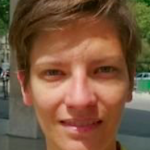
Abstract
In previous work I have shown that stemness, the property that defines normal and cancer stem cells (CSCs), can be four different types of property—categorical, dispositional, relational, or systemic—depending on tissues. This talk focus on stemness in cancer and explore three questions related to these ontologies:
- Is stemness ontology the same in cancers and their normal tissue-counterpart? I explore various blood cancers to show how some genetic or non-genetic cancer-related alterations could change the ontology of stemness. Stemness ontology in cancer might thus not be inferred from normal tissues.
- What difference does stemness ontology make in cancer clonal evolution and progression? Given that only the CSCs can long-term self-renew, it is often argued that CSCs are the main units of selection in cancers, or that they represent the effective population size. I show that stemness ontologies can drive differently cancer clonal evolution, impacting both processes and patterns of evolution.
- What difference does stemness ontology make for cancer treatment? Therapeutic strategies aiming at targeting the CSCs or their niche are under development. I show that these strategies rely on different presuppositions concerning stemness ontology. Determining stemness identity in cancers, taking into account clonal evolution, is thus necessary to adopt the most efficient therapeutic strategy.
Anya Plutynski (Department of Philosophy, Washington University in St. Louis, USA)
Is Cancer Due to Bad Luck?

Abstract
In 2015, Tomasetti and Vogelstein published a paper in Science containing the following provocative statement:
… only a third of the variation in cancer risk among tissues is attributable to environmental factors or inherited predispositions. The majority is due to “bad luck,” that is, random mutations arising during DNA replication in normal, noncancerous stem cells.
The paper – and perhaps especially this rather coy reference to “bad luck” – became a flash point for a series of letters and reviews, followed by replies and yet further counterpoints. The aim of this talk is first, to briefly explain and describe what Tomasetti and Vogelstein meant by “bad luck.” I then turn to a comment made by Nowak and Waclaw (2017), who wrote that “the correlation “explains” the data in the statistical but not in a biological sense.” The second part of the talk concerns what it means to explain in the “statistical” but not the biological sense. The questions raised by critics concern not simply whether stem cell divisions do account for these average differences in incidence, but whether and how such correlations are explanatory. The case thus serves as an interesting case study in what it means (or ought to mean) to “biologically” explain. I conclude by considering some implications of the debate for cancer screening, and the benefits and trade-offs in both primary and secondary prevention.
Thomas Pradeu (ImmunoConcept, UMR5164, CNRS & University of Bordeaux; IHPST, CNRS & University Paris 1, France),
Is cancer a breaking up of biological individuality?

Abstract
Every multicellular organism is a community of cells, integrated into a cohesive whole by different unifying mechanisms (Buss 1987). One of the most important of these mechanisms is the immune system which, in all living things, constantly monitors what happens in the organism, eliminates abnormal components, and maintains and repairs bodily constituents (Michod 1999; Pradeu 2012). In cancer, however, the unity of the individual organism breaks up: cancer cells cease to obey key regulating signals sent by the rest of the organism and multiply abnormally, seemingly favoring their own reproductive success at the expense of the whole organism (Frank 2007; Greaves and Maley 2012). From this point of view, cancer can be described as a process of “de-individuation” at the organism level, and a re-individuation at the cellular level (Buss 1987; Godfrey-Smith 2009). Decades of research have established that the immune system plays a key role in controlling the development and spread of cancer. Even if the general concept of immune-mediated surveillance of cancerous tumors dates back to the end of the 19th century (Balkwill and Mantovani 2001), it is only recently that the detailed phases and mechanisms of this process have been worked out (Schreiber et al. 2011). This research has paved the way for one of the most significant breakthroughs in recent cancer research, namely the use of immune checkpoint inhibitors in the clinic (Ribas and Wolchok 2018). It is now clear that the immune system can both restrain cancer growth and metastasis, and favor those phenomena. The aim of this talk is to investigate this dual role of the immune system with regard to cancer, and thus better assess the puzzling contribution of the immune system in both the individuation and de-individuation of the organism. I submit that the immune system is the main regulator of the cohesiveness of the organism and that it insures this regulation through its capacity to detect sudden changes occurring in the body (Pradeu et al. 2013). On this basis, I would like to defend the view that cancer is always the result of dysfunctions correlated with the immune system, but such dysfunctions can be either dysfunctions of the immune system itself, or dysfunctions of non-immune elements that triggers normal immune responses, though with harmful consequences. I suggest that considering this distinction could have important experimental and clinical consequences.
Selected talks
Benjamin Chin-Yee (Resident Physician, Department of Medicine, University of Toronto, Canada) & Ian Chin-Yee (Professor, Division of Hematology, Department of Medicine; Program Head, Department of Pathology and Laboratory Medicine, Western University, Canada), Small Clones Meet Big Data: Dangerous Liaisons?
Genomic technologies and the rise of ‘big data’ in oncology are changing approaches to cancer classification, prognosis, and treatment. These technologies promise to identify ‘driver mutations’ and potential targets for drug therapies in an era of ‘precision medicine.’ The application of deep sequencing methods has revealed that human tumours display a wide range of somatic mutations and exhibit significant clonal heterogeneity [1]. The clinical significance of small clones harbouring specific patterns of mutation and gene expression is uncertain. While some clones may have significant oncogenic potential, proliferating according to the traditional model of clonal evolution in cancer, others may represent more indolent variants that can exist in ‘normal’ populations for years without manifesting clinical disease. The identification of small clonal populations adds complexity to our current knowledge of cancer biology, and demonstrates how new technologies are leading to shifts in our understanding of the nature of cancer. Our presentation examines the relationship between advancements in genomic methodologies and cancer ontology with a specific focus on the clinical implications for prognosis and treatment decisions. We raise concerns that big data analytics and the identification of small clonal variants pose challenges in the clinical setting because: (i) current genomic data underdetermine the natural history and oncogenic potential of small clones, and (ii) translating these genomic data into clinically relevant tools to guide prognosis and treatment remains problematic. We illustrate these points through a case study of a common hematologic malignancy, chronic lymphocytic leukaemia (CLL), and its precursor condition, monoclonal B-cell lymphocytosis (MBL). Focusing on the tumour suppressor gene TP53, a ubiquitous negative prognostic marker in cancer, we highlight the pitfalls associated with interpreting this mutation and clonal populations expressing this genetic variant in patients with MBL/CLL. Given that current genomic data underdetermine clinical outcomes, these data have been combined with clinical parameters in the development of prognostic algorithms [2]. These algorithms, however, raise additional issues surrounding data selection and representation in clinical measurement, and may only further compound clinical uncertainty [3]. Although genomics holds significant promise in oncology, we argue that these data should not be privileged within clinical epistemologies, but rather integrated within a pluralistic framework that combines mechanistic reasoning, clinical evidence, and person-centered factors to guide clinical care. The case of MBL and CLL demonstrate the clinical uncertainties engendered by novel genomic technologies, and how small clones and ‘big data’ raise important epistemic and ontological challenges for our current understanding of cancer, which relate to broader debates in the philosophy of medicine, from clinical epistemology to the definition of disease.
Jean Clairambault (INRIA, LJLL, Sorbonne Université, Paris), Cancer as a default of coherence between tissues in metazoans: what mathematical models should be developed to help prediction prevention and treatment of cancer?
I list below open problems in the biology and evolution of cancer, a disease specific of multicellular organisms, that therefore must be considered at the cell population level.
– Cancer may be defined as a spatially localised loss of coherence between tissues in the same multicellular organism, but also possibly due to flaws in an individual’s epigenetic landscape such as imperfect epigenetic control of differentiation genes. Can we define cancer as (localised) disruption in the control of cell differentiations?
– How does such loss of differentiation control result in cell plasticity and phenotype heterogeneity in cancer cell populations?
– What does such coherence (nonconflicting management of differentiations) physiologically consist of, and how is it disrupted in cancer? Biological pathways may provide hints to answer these questions; in particular, transposable elements and the interferon pathways (Guler et al. 2017).
– “The genes of cellular cooperation that evolved with multicellularity about a billion years ago are the same genes that malfunction in cancer.” (atavistic hypothesis of cancer, Davies and Lineweaver 2011): how can these genes be systematically investigated (Domazet-Loso & Tautz 2010), looking for zones of fragility in the tinkering (F. Jacob 1977) evolution is made of?
– What is the part of lack of communication (e.g., by perturbed gap junctions, Trosko 2016) occurring between cells of a given tissue in such lack of coherence, what intercellular signalling is involved, and how is it dependent on local / general energetic / metabolic conditions?
– Some specific genes of stress response, widely conserved throughout evolution, known as cold genes (Wu, PNAS 2015), can make a cell population able to resist destruction coming from cytotoxic drugs at high doses. Can we identify them in all phenomena of drug resistance in cancer? How is bet hedging (Brutovsky & Horvath 2013) in drug resistance mechanisms related to such cold genes?
– Whereas the evolution of species relies on evolutionary branching, leading to isolated species, the evolutionary branching by differentiations, yielding about 200 different cell types in a spatially constrained single human organism, inevitably leads to communications between these cells. All these cell types derive from the same initial cell. How do normally differentiated cells recognise other cells as of the same kin and normally differentiated, i.e., what sort of self is involved in this friend-or-foe recognition and how does it call immunogenic response when such recognition returns foe?
– What parallelism can be established between the development of multicellularity in different species proceeding from the same origin and the development of the immune system in these different species? Is there a link between the maintenance of epigenetic barriers to control coherence of differentiations and the status of the immune system?
These questions, fundamental to help us understand how cancer emerges and evolves, are nevertheless seldom posed in modern biological works on cancer so far. I propose to methodically develop a research program based on mathematical modelling (adaptive dynamics), phylogenetic analyses, epigenetics and evolutionary biology, to help answer them.
Marie Darrason (Interne de pneumologie APHP / Chercheuse associée à l’IHPST) & Elodie Giroux (Maîtresse de Conférences en philosophie à l’UFR de Lyon 3), Molecular classifications of cancers – where are we going?
With projects such as the Cancer Genome Atlas, molecular classifications of cancers have again become a hot topic. But a rapid survey of the current biomedical literature reveals the coexistence of various ways of renewing the classification of cancers from a molecular standpoint. The aim of this contribution is to introduce these different kinds of classification, to analyse their theoretical and practical basis, and to discuss their implications and connection with clinical practices.
First, we will focus on the molecular classifications that the development of targeted therapies has promoted. Indeed, targeted therapies have been developed to match a molecular “actionable” alteration, i.e. an alteration that is essential to the development of the disease and whose activation or inactivation is going to have a spectacular effect on disease course. In this paradigm, it is therefore tempting to conclude that the apparition of targeted therapies would correspond to a molecular redefinition of cancer: to each specific phenotype would correspond a specific actionable mutation and a specific targeted therapy. Far from the vague and blurry anatomoclinical classifications, it would be finally possible to reclassify the same alleged unique entity (cancer) into several distinct entities, that is, molecular subtypes of cancer. However, several limitations undermine such a view, among which: the ineluctable emergence of resistance to targeted therapies, intratumor and intertumor heterogeneity, the dependence to the context of the concept of actionable mutation and the existence of non oncogenic addictions.
Several other ways of conceptualizing and subgrouping cancers have emerged, either in order to overcome these limitations, or in order to integrate dynamic and systemic approaches to cancer. Three of these ways seem to warrant further attention. The first approach is based on the concept of “molecular trajectory”, and intends to incorporate all the previously cited evidence about inter and intratumor heterogeneity and resistance in a dynamic framework. The second one is based on the concept of “molecular signature”, which refers to a unique or multiple combination of genetic alterations, with a specificity regarding to diagnosis, prognostic and prediction of response to treatment. In this conception, the combination of genetic alterations does not necessarily have anything to do with the molecular mechanisms at play. There then seems to be a discrepancy or, at the very least, a tension between a system for classifying patients for etiological or diagnostic purposes and a system for predicting the outcome or the prognosis of the disease. Finally, with network theory and systems biology come some attempts of classifying diseases according to disease modules, each module being assigned to a specific disease. This last paradigm could paradoxically lead to the dissolution of molecular classification of cancers for two sets of reasons: first, because it is based on a multilevel approach of disease that goes beyond the molecular level; second, because the individualization of cancer modules (each diseased individual having developed a unique and idiosyncratic cancer module) may question the very logic of classification itself.
Gregor Greslehner (ERC IDEM, ImmunoConcept, CNRS & University of Bordeaux, France), Molecular cancer classification: a protein-based perspective
Cancer is not a single disease. Therefore, classification is an essential starting point for cancer diagnosis and treatment. Various classification systems exist in medical and biological practice. The dominant approach is to classify cancer based on the cellular type of its origin. Recently, however, other molecular classification systems have been developed which allow for more fine-grained classification – and more targeted therapies. While the tissue from which cancer originates is an important factor, key molecules are shared in cancer types from different tissues and different types of cancer can arise within the same tissue.
Each type of cancer begins with a single cell hidden in its adjacent tissue for a long time. Once cancer becomes detectable clinically, there usually need to be more than a billion cancer cells. Being a slow process, cancer can remain below the threshold of detectability for the major part of its genesis. For early detection, certain biomarkers like DNA mutations and proteins present in the blood are an important diagnostic tool. I argue for the importance of the protein composition of cells for classifying and treating cancer, based on recent scientific and philosophical accounts.
“Liquid biopsies” for quick and affordable screening are now available. In addition to mutations and other genomic markers, emphasis is currently being put on the protein composition of cancer cells. For a functional understanding of the effects of mutations, remaining at the nucleotide sequence level is not sufficient. Thus, protein-based approaches are advantageous over DNA sequencing-based approaches as biomarkers in blood samples. Specifically, certain portions of proteins called domains – the structural and functional building blocks of proteins – have been shown to constitute mutation hotspots.
Protein domain mutation hotspots provide important clues to understanding and classifying cancer. Mutation hotspots at the DNA level can be classified according to the effects these mutations have on the according structural and functional parts of proteins. This way, a much more fine-grained molecular characterization and classification of cancer becomes possible. If certain classes of target protein domains can be identified, this also suggests ways to arm the immune system against these protein domains already at early stages of cancer.
A better molecular understanding of the structural and functional properties of affected protein domains in cancer cells is the first step to understanding the processes on higher levels of organization. Questions that need to be addressed include: Which hallmark protein domains are affected in which types of cancer? Which structural and functional properties of such domains cause cells to become malignant? Does protein-based classification deviate from cell-of-origin classification? The key proteins appear to be involved in regulating the balance between keeping neoplastic cells at bay and not overcautiously stopping cells from proliferating without need. Apoptosis and cellular senescence, i.e. cells killing themselves or arresting themselves in a state of non-division, are triggered by certain core proteins (tumor suppressors). Frequently, it is exactly such proteins which are affected in different types of cancer. An adequate cancer classification system needs to address these questions.
Katherine Liu (University of Minnesota, Department of Ecology, Evolution, and Behavior Minnesota Center for Philosophy of Science), Alan Love (University of Minnesota, Philosophy Department, Minnesota Center for Philosophy of Science), Michael Travisano (University of Minnesota, Department of Ecology, Evolution, and Behavior, Minnesota Center for Philosophy of Science), How Cancer Spreads: Modeling cancer as an infectious disease
Despite tremendous advances in cancer research, a stubborn gap exists between these advances and successful treatments that reduce mortality. One strategic way to address this gap is to model cancer as an infectious disease that we give ourselves. This conceptual maneuver shifts attention from cellular proliferation and tumor growth (how cancer grows) to cellular motility and metastasis (how cancer spreads), and emphasizes properties of cancerous cells that are responsible for the majority of deaths. We use the case of cystic fibrosis as an analogy to show the value of conceptualizing a genetic disease that is recalcitrant to treatment as an infectious disease. One consequence of modeling cancer in this manner is a more direct engagement with the pathological features of cancer’s biology and, therefore, it has increased promise for identifying novel clinical applications—the primary goal of translational medicine.
Alison McConwell (Stanford University), Tracking Medical Interventions that Target Cancer Kinds
Recent philosophical study of cancer identifies the functional role cancer plays in evolution by selection (Germain 2012, Lean and Plutynski 2016, Germain and Laplane 2017, Liu et al. 2017). Approaching cancer from an evolutionary perspective is one way to understand cancer progression and metastasis within the life cycle of an organism, as well as cancer’s own evolutionary history, such as in transmissible cases that survive their host. However, cancer’s role in natural selection is only one part of the story. In this paper, I explore an alternative point of view: a molecular approach to cancer inspired by the practice of canine oncology. There is much to be learned through a philosophical study of cancer within a non-evolutionary framework, which concerns clinical classification programmes used in treatment practice. Clinical practice includes, but is not limited to, the work of oncologists administering diagnoses, prognoses, and treatment plans in hospitals and medical centers. I explore the importance of mutations and mutational patterns in classifying different cancer kinds, how medical intervention draws from those classifications, and other epistemic benefits of such endeavours. By investigating classificatory practices in cancer biology, we can better understand how they guide epistemic inquiry and lead to success. Specifically, I investigate the influence of stochastic processes—processes not biased to the environment like mutations—for cancers. This moves away from functional adaptation-talk and selection, and towards a philosophical account of cancer that emphasizes intrinsic structural characteristics of oncogenic cells. First, I discuss theoretical and empirical grounds for focusing on intrinsic cellular features, such as their role in cancer initiation and why mutations matter for distinguishing among cancer kinds. Then, I outline a particular case study in canine oncology to show how these details explain clinical success. As we’ll see, mutations matter for the decision-making process in determining cancer treatment. Overall, I primarily focus on the practical advantages of a molecular approach to cancer, how it captures the classificatory and epistemic practices of cancer biology, and especially how a non-evolutionary framework identifies structural cancer classifications as means for intervention and positive clinical outcomes in medicine.
Sandrine de Montgolfier (Institut de Recherche Interdisciplinaire sur les enjeux Sociaux (IRIS), Bobigny; Université Paris Est Créteil, France), How the integration of new technologies of sequencing in oncology services leads to confusion on origin of cancer, treatment strategy and prevention
I propose to share and discuss the results of different surveys based on interview methodology where I questioned professionals on the integration of new technologies of genomic sequencing in their practice. I will focus my talk on the exploration of two cases. The first will be based on the integration of sequencing strategy in cancer genetic services. I will show how this integration leads to a modification of the professionals’ representation of cancer origin but also a modification of the explanation they give to patients. The goal of those services is to predict the consequences of a hereditary mutation, and to propose a prevention strategy for the patients and eventually the familly: but professionals meet more and more uncertainty on new associations linked to the technical strategy proposed in the diagnosis. The scientific validity of these associations is questioned. The second case will be based on paediatric oncology, targeted therapies research programs currently integrate more often tumour sequencing for children with apparent sporadic cancers presenting recurrences or in high-risk or treatment resistant tumours. These explorations combine the sequencing of the tumour DNA and of a matched constitutional DNA and can therefore reveal the presence of germline variants in genes involved in cancer susceptibility syndromes or lead to other incidental findings. These new approaches upset classical genetic practices (logistically and temporally). This therapeutic strategy could be link to a possible genetic predisposition that would affect other members of the family. I will focus on results of this genetic analysis that are disconnected of what professionals expected to find: for example genetic mutation known to be linked to another cancer. The implementation of genetic in oncology services questioned the representation we have on the genetic of cancer.
Jacob Neal (History and Philosophy of Science Department, University of Pittsburgh), How to Stop Worrying about Model Microfoundationality: Lessons from Multiscale Cancer Modeling
Microfoundational or bottom-up models aim to reproduce the high-scale behavior of a system by modeling the interactions between lower-scale entities. Epstein and Forber (2013) posit five virtues of microfoundational models. They suggest that microfoundational models in which “macrophenomena emerge bottom-up from their microfoundations” have certain advantages over other models and modeling strategies (205). In this paper, I argue that bottom-up modeling is not so special. I consider the modeling strategies employed by in silico cancer researchers. Using this body of evidence, I demonstrate that none of the five virtues identified by Epstein and Forber are exclusive to bottom-up modeling. The middle-out, multiscale models preferred by cancer modelers also embody these virtues. Thus, I conclude, we have no good reason to privilege microfoundational models and instead ought to embrace pluralism when it comes to modeling complex biological phenomena, such as cancer.
Because of the complexity of the disease and the difficulty of experimental interventions, cancer modeling has become a cornerstone within cancer research (Deisboeck et al. 2011). The middle-out, multiscale models preferred by cancer modelers tend to integrate two distinct model types: discrete and continuous. The former are typically cellular automaton (CA) models, which update the state of each cell after discrete time steps in order to model tumor progression. The latter use the principles of continuum mechanics to represent variables that affect the dynamics of tumor growth. Unlike CA models, continuum models represent the model variables through sets of partial differential equations. Hybrid modeling approaches incorporate the strengths of both the discrete and continuum approaches to better simulate certain aspects of tumor growth. Using these modeling strategies, the cancer modeling community has recently begun to model cancer as a biological systems disease. This approach seeks to understand emergent behavior of the system rather than focusing on activities of individual components. Thus, many cancer modelers have shifted their attention from single-scale to middle-out, multiscale models. Middle-out modeling strategies begin by modeling a temporally and spatially intermediate scale and then gradually expand outward to include higher- and lower-scale entities and processes. The most common strategy of multiscale model development in cancer research involves integrating CA-based models with models of subcellular entities or processes. This creates a hybrid model, in which subcellular processes are represented by a continuum model and tumor cells are represented by automaton cells.
Through an examination of these modeling practices within cancer biology, I show that Epstein and Forber’s five virtues are not exclusive to bottom-up models. The work of in silico cancer researchers undermines the claim that bottom-up modeling strategies are preferable to those models that explicitly include entities and interactions at higher-scales. In fact, I argue that the middle-out modeling strategy often marks an improvement over a strictly bottom-up approach. Hence, the lesson from cancer modeling seems clear: when it comes to modeling complex biological phenomena, we ought to embrace pluralism and support the development of a multitude of models and modeling strategies.
Raphael Scholl (University of Cambridge, Department of History and Philosophy of Science), Bridging the gap between population and individuals: Epistemic strategies in cancer biology
The goal of personalized medicine is to stratify patient populations into subgroups according to biologically relevant individual variations. In principle, these variations could be in lifestyle or environment; in practice, they are usually genetic. The hope is that subgroups will exhibit meaningful regularities that are directly relevant to individual patients. We may be able to explain why a risk exists or a disease develops in members of a particular subgroup; what course of disease that subgroup should expect; or how the subgroup will respond to different kinds of therapies. However, this project has turned out to be more challenging than early proponents expected. Around the time of the completion of the human genome project, it was expected that association studies would find a handful of genetic variations with relatively large effects that are relevant to explanation, prognosis, and therapy. But most of our data indicates that medically relevant genetic variations are for the most part rare and heterogeneous. This presents an unexpected epistemological challenge. Correlational studies, such as genome-wide association studies, are often insufficient for investigating causal structures in which the same effect can be produced by a large range of different causes, where each cause occurs only infrequently, and where each cause typically only has a small effect size. Cancer biology is a paradigm case of this problem. Over the past decades, the genetic causes of tumors have been found to be both extremely rare and strikingly heterogeneous. At the molecular level, the somatic mutations of most tumors differ from those of most other tumors, even when their clinical phenotypes are indistinguishable.
Anthony Smith (University of Utah, USA), Dealing with Genetic Uncertainty: Variants of Uncertain Significance and Error
One goal of genetics research is to aid clinicians in predicting and preventing disease. One way that this can be accomplished is by using genetic testing to screen for an individual’s proclivity for developing cancer. To help predict and prevent cancer, we need to know the association between different genetic variants and the occurrence of disease. For most forms of cancer, having a deleterious mutation increases the likelihood that one will develop cancer. For example, with Lynch’s Syndrome, if one has a deleterious mutation in their MLH1 gene, then, by one conservative estimate, one has a forty percent chance of developing colon cancer. On the other hand, if one does not have a deleterious mutation, they only have a four percent chance of developing cancer. The problem is that many cancers, like BRCA1 and 2, have what are called Variants of Uncertain Significance (VUSs). VUSs are variants whose association with cancer (and other diseases) are uncertain because there is either conflicting evidence or a lack of evidence about their association with cancer. This makes precise categorization difficult: How confident do we need to be that a specific variant is associated with cancer before we call it pathogenic? It also makes it more difficult to predict and prevent cancer: Given this uncertainty, what should clinicians and genetic counselors tell their patients about their risk of cancer and what steps, if any, they should take to deal with this risk?
To aid in this task, several different schemes have been proposed to help categorize genetic variants. Despite the differences in these schemes, they all agree that one main goal should be to minimize errors. Given this shared goal, inductive risk is an important concept to help set these thresholds. Inductive risk is the chance that we accept mistaken conclusions. That is, there is always the chance that we will reject a conclusion when it is true, a false negative, and accept a conclusion when it is mistaken, a false positive. Dealing with inductive risk entails that we vary our thresholds for accepting and rejecting conclusions so that they balance the costs of these errors.
All of the schemes to classify genetic variants treat the costs of false positives and false negatives as being equal. The is mistaken. The cost of different mistakes varies according to the kind of cancer you are dealing with. First, over-diagnosis and treatment, the cost of false positives, means that we provide preventative care to patients who do not need it nor benefit from it. Second, missing patient who are at a higher risk of certain cancers, the cost of false negatives, means that we miss patients who could benefit from preventative care. Either way, these errors do not always have the same weight, and they should not be treated as such. Rather, we will want to adjust our thresholds for labeling genetic variants according to the weight of the costs that mistakes force patients to bear.
Organizing committee
Wiebke Bretting (ERC IDEM, ImmunoConcept, UMR5164, CNRS & University of Bordeaux)
Sara Green (Section for History and Philosophy of Science, Department of Science Education, University of Copenhagen, Denmark)
Lucie Laplane (IHPST, CNRS & University Paris 1; Institut Gustave Roussy, France)
Maël Lemoine (ImmunoConcept, UMR5164, CNRS & University of Bordeaux; IHPST, CNRS & University Paris 1, France)
Thomas Pradeu (ImmunoConcept, UMR5164, CNRS & University of Bordeaux; IHPST, CNRS & University Paris 1, France)
Elena Rondeau (ImmunoConcept, UMR5164, CNRS & University of Bordeaux, France)
Patronage committee in Bordeaux
Andreas Bikfalvi (Professor of Biology and Director of the Angiogenesis and Cancer Microenvironment Laboratory, INSERM U1029, Univ. Bordeaux)
Julie Déchanet-Merville (Research Director in Immunology at CNRS, Head of ImmunoConcept, Bordeaux)
Nicolas Larmonier (Professor of Immunology, Head of the research axis Cancer Immunology and Immunotherapies at ImmunoConcept, Bordeaux)
Simone Mathoulin-Pelissier (Professor, Head of Team Epicene, Bordeaux Population Health)
Jean-François Moreau (Professor of Immunology, Univ. Bordeaux, Pellegrin Hospital & ImmunoConcept, Bordeaux).
Olivier Saut (Research Director at CNRS, Team leader MONC Data-driven medicine against cancer, Inria, Bordeaux)
Pierre Soubeyran (Head of research of Institut Bergonié, Comprehensive Cancer Center in Bordeaux, and Professor of Medical Oncology at the University of Bordeaux)
Christine Varon (Associate Professor, BaRITON, Bordeaux Research in Translational Oncology, Bordeaux)
Argument
Cancer is one of the main causes of death globally according to the World Health Organization. The biological complexity and heterogeneity of this disease (or group of diseases) make it very difficult to apprehend, control, and cure. For a long time, cancer has been little studied by philosophers of science. Most of the work in the humanities and the social sciences has focused on the social, anthropological, psychological, and ethical dimensions of cancer. Yet cancer is now becoming increasingly an object of study for philosophers of biology and philosophers of medicine. In particular, the scientific explanation, definition, classification and prediction of cancer as a biological and medical phenomenon face many epistemological challenges. Cancer research raises a host of experimental, theoretical, and conceptual issues that connect with most, if not all, the domains of today’s biology and medicine.
The main goal of this workshop is to provide a forum where philosophers of biology and philosophers of medicine meet to discuss the biological and medical science of cancer.
(Now closed)
